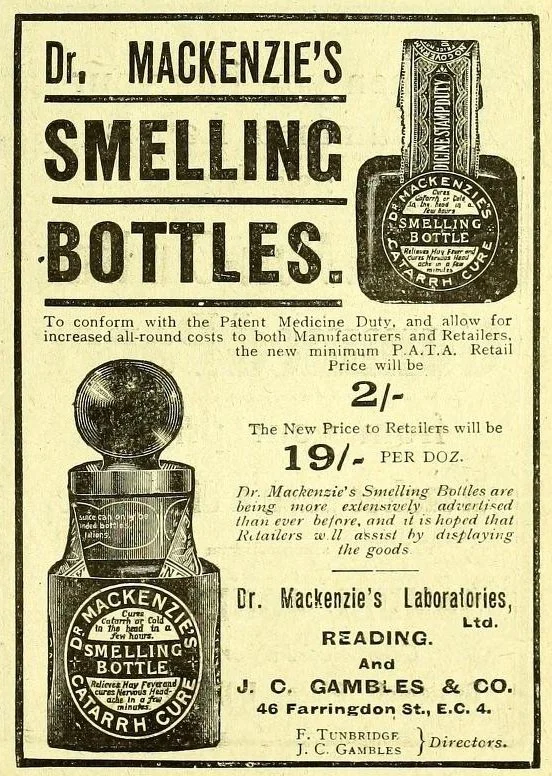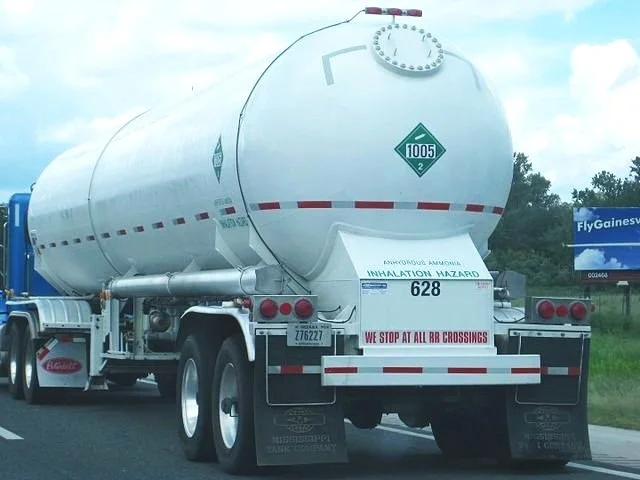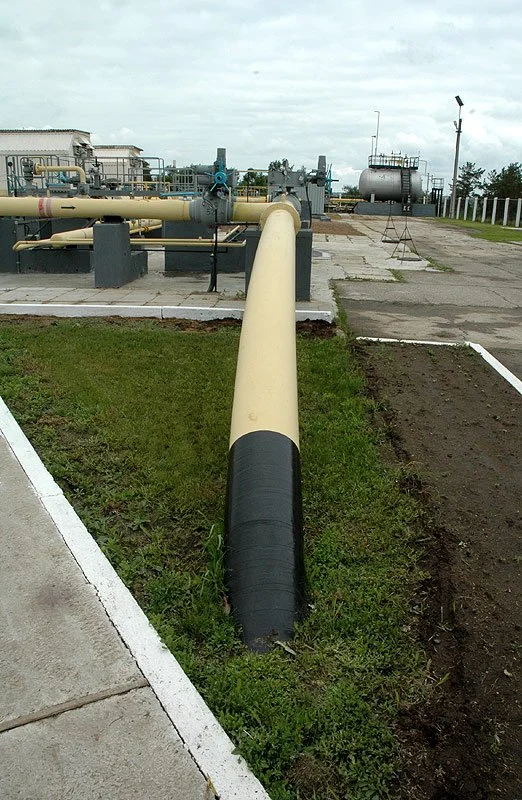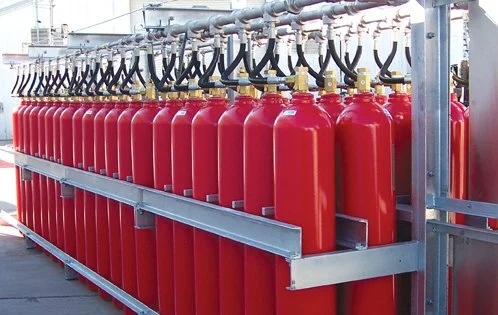Is Ammonia Safe?
Ammonia has been industrially produced, stored and transported for over 100 years. Over that time it has enjoyed a good safety record, with few serious accidents. However it is toxic if inhaled, and damaging if released into the environment. So if ammonia is to become a widely used global fuel for industry, heating, power generation and transport, we need to find even safer ways to store and transport it - making it at least as safe as oil and gas fossil fuels. We believe that can be achieved, and better, with the necessary research and investment.
Ammonia is Safe, when Handled Safely
Ammonia has a number of very positive attributes from a safety perspective. Among them, it is:
difficult to ignite, even when mixed with air in the proper proportion for complete combustion, and burns with a low flame speed;
about 40% lighter than air, so it will tend to rise out of harm’s way if accidentally released;
highly pungent even at low concentrations, so people are quickly aware of any nearby leak, before suffering health consequences.
slow to heat up and evaporate from cold, due to its high specific heat capacity, and high latent energy of vaporisation.
But ammonia is toxic. In particular it’s highly irritant to eyes, skin and respiratory tissues. Serious exposure can prove fatal. Yet it has no long term effects on health other than through the direct damage caused by exposure. It’s not mutagenic, carcinogenic, endocrine-disrupting, bio-accumulative or persistent.
More generally, ammonia’s properties are well understood as a result of its widespread use as feedstock for fertilisers, and as a refrigerant in commercial freezers. Appropriate equipment, handling procedures and safety protocols have therefore been developed. Given the scale of ammonia’s use and movement, few serious accidents involving ammonia have been recorded.
The future applications foreseen for Green ammonia include industrial scale heat and power generation, and fuelling large scale transport including shipping, rail and aviation. All will involve storing and moving large volumes of ammonia. Each of these has its own safety considerations, as discussed below.
In our opinion, however, ammonia’s immediate toxiciy makes it unsuitable as a replacement for natural gas in homes. Likewise, it may never be used as a fuel in domestic vehicles.
Photo: a historic British advertisement for an ammonia-based smelling bottle. At least the ammonia’s pungent smell would overwhelm unpleasant ambient odors associated with Victorian and Edwardian life. Public Domain.
Storing Ammonia Safely
Ammonia has been handled and stored for 100 years, even in the midst of urban areas. The risks are generally considered low.
Currently, ammonia is almost all stored and transported as a pressurised liquid. A pressure of 8 bar (atmospheres) is enough to liquefy ammonia at ambient temperatures of 20C (see Figure 1). The ease of compression (compared to cooling and storing at low temperature) has made this the main form of liquefaction.
Provided proper procedures are followed this is a very safe storage solution. But where regulations and protocols are flouted tragic consequences can follow.
The worst recorded ammonia accident took place in Dakar, Senegal, on 24th March 1992, killing 129 people, when a tank holding 22 tonnes of compressed liquid ammonia exploded at a peanut factory, with the immediate release of its entire contents.
Further, the released gas, cooled in places to -70C by its sudden expansion, formed a low lying cloud which spread widely over the surrounding area. It was this secondary cloud that caused most of the fatalities.
It’s an accident that should never have happened. The tank in question had been repeatedly over pressurised, causing it to distort, and subject to substandard weld repairs to resulting cracks. At the time of its rupture it had been considerably over-filled. There was no pressure release valve. The explosion finally took place because the tank was exposed to tropical sunshine causing heating and a rise in pressure to well over 100 bar (atmospheres).
An alternative ammonia storage solution is to liquefy the gas by cooling, rather than by compression. Ammonia can be liquefied at atmospheric pressure by cooling it below -33.3C, and can be stored at that temperature in unpressurised insulated containers. (See Figure 1, right).
To prevent degassing from thermal leakage it can simply be cooled further, say to -40C, or even as low as -70C (no colder to guard against solidification). Such temperatures can easily be maintained, even away from refrigeration plant, using widely available liquid nitrogen with its ambient pressure boiling temperature of -196C.
In the event of any accidental environmental release of cold liquid ammonia, or even complete rupture of containment, its rate of gasification is slow owing to its low vapour pressure, allowing time for people to withdraw to a safe distance. See Figure 2, right.
Returning to the Dakar accident, the tank could not have exploded had the ammonia been stored in an ambient pressure insulated container at -40C. Even if a tankful of cold liquid ammonia were to be released, its evaporation to gas would take place slowly, not explosively, greatly reducing the hazard.
Photo: Workers fixing a minor ammonia leak at a nitrogen fertilizer plant in Dimitrovgrad, Bulgaria. Credit: Tseno Tanev via Panoramio / Wikimedia CC-BY-SA 3.0.
Figure 1: Vapour pressure of ammonia. At ambient temperatures, ammonia can be liquefied at around 8 bar (atmospheres). Below 33.3°C ammonia is liquid at ambient pressure, exerting < 1 bar of vapour pressure.
Photo: Ammonia storage facility, Qafco, Mesaieed, Qatar. Credit: McDermott.
Transporting Ammonia Safely
The safe road transportation of ammonia is subject to all the considerations that apply to its safe storage, except that conditions are intrinsically far more hazardous due to the risks of collision. This was recently illustrated by a tragic accident that took place near Chicago, Illinois, USA on 29th September 2023, which resulted in the deaths of five people, and a further six hospitalisations.
A truck carrying almost 30 cubic metres of compressed liquid ammonia left the carriageway and struck a parked trailer, causing a breach of containment and the release of 15 cubic metres of the cargo. Parts of the nearby town of Teutopolis were evacuated.
Another recent incident causing serious ammonia release took place under murky circumstances near Masyutivka in Ukraine’s Kharkov region on 6th July 2023 when the 1,534 mile / 2,469km ammonia pipelines from Togliatti on the Volga River to Odessa and other Black Sea ports.a pipeline was blown up. I
n this case no deaths resulted however some people were hospitalised. A cold ammonia cloud reportedly settled in nearby low-lying woodland but fortunately no people were present. Limiting the impact of the breach, the pipeline was not in use, although it contained pressurised ammonia,
In the first incident, it would appear that the fatal release of ammonia following the breach of containment would have been greatly limited had the ammonia been transported cold (as set out in the previous section) as there would have been no pressure forcing it out.
The 8 bar (atmospheres) pressure that likely prevailed was enough to force the discharge of half the tank’s contents, before being self-limited by falling temperatures resulting from the sudden evaporation. In the case of cold liquid ammonia there would have been no such pressure. Compartmentalisation of the tank could have further limited leakage.
Similar considerations would apply to the transport of ammonia by air, most likely as aviation fuel, and by train. whether as fuel or as cargo. In the worst case event of an air or train crash in an urban area, there would be a good chance that ammonia release could be kept to a low initial level even with the complete rupture of ammonia containment. In such cases many lives could potentially be saved.
As for the Ukrainian pipeline there’s probably little that could have been done - other than to reduce the pressure in out-of-service ammonia pipelines traversing active war zones!
It would be theoretically possible to refrigerate ammonia pipelines, much as some heavy oil pipelines, for example those carrying Canadian tarsand oil, are insulated and the oil is heated at regular intervals.
However ammonia pipelines would still have to be built to contain pressurised ammonia, to maintain safety in the event of refrigeration failure. The extra costs of construction and operation would also be high, while contributing little benefit.
Photo: Anhydrous ammonia tanker on the US Highway System. Photo: Sylvar via Wikimedia Commons, CC.
Table: Ammonia Toxicity: Concentration / Exposure - Response. Data from Laval, 2020.
Odour and Toxicity
Ammonia has a powerful, sharp, penetrating smell that makes it easily detected by people even at very low concentrations between 5 - 50 parts per million (ppm) of air. For comparison:
the ‘Severe Irritation’ threshold is 140 ppm;
the ‘Irreversible Effect Threshold’ is 343ppm (Tissot, 2003);
the Rapid Lethality threshold is about 5,000 ppm, or 0.5%.
So (unlike some other toxic gases like carbon dioxide and carbon monoxide) people can typically detect the presence of ammonia by smell alone, well before harmful levels of the gas are reached. Additionally, Also inexpensive (< £300) ammonia detectors are widely available that respond to ammonia at concentrations as low as 1ppm (for example).
At low concentrations below 50 ppm, repeated exposure to ammonia produces no chronic effects to human body. However, even at such low levels it can be extremely irritating to the eyes, throat and airways with prolonged exposure. (Laval 2020, Tissot 2003)
Citric acid is a very effective means to neutralise ammonia, recommended to neutralise ammonia spills. A filter mask containing 75g of citric acid crystals would theoretically allow 15 minutes of safe breathing at a concentration of 55,000 ppm.
Photo: an industrial mask / respirator as used to protect a range of hazardous chemicals. Credit: AlexChirkin via Wikimedia Commons, CC0.
Photo: This wouldn’t happen with ammonia! The Buncefield oil depot fire in Hertfordshire ten minutes after the first explosion on 11th December 2005. Credit: Rick Martin CC BY-SA 3.0.
Photo: CO2 fire extinguishers by Giele, as recommended to extinguish fires involving ammonia. Credit: Giele.
Flammability
Although ammonia contains a considerable chemical energy that’s released through combustion, it’s surprisingly hard to ignite, requiring an unusually narrow 15-28% of ammonia in air, and the high self-ignition temperature of 930K (657C). This compares to 712K for methanol, 859K for methane, 773-850K for hydrogen and 503K for gasoline (Lhuillier, 2020).
As stated in the IIAR Handbook of Ammonia, “Although ammonia is designated as a non-flammable gas for shipping purposes by the United Nations and the US Department of Transportation, it is flammable in air within a certain range of concentrations. Because these concentrations are quite high, it would be extremely difficult to reach those conditions in an outdoor shipping situation. The fact that ammonia gas is lighter than air and that it diffuses readily in air makes it difficult to create a flammable situation outdoors.”
Ammonia also has a low flame propagation speed of 0.07 m/s (Hayakawa, 2015), much lower than most hydrocarbons, such as petrol / gasoline with its flame speed of 0.4 m/s. Consequently the fire risk from ammonia is greatly reduced compared to gasoline, natural gas, oil or kerosene. (Jansohn, 2013)
To extinguish an ammonia flame it is advisable to use only CO2 as a fire suppressant, especially if liquid ammonia could be present. Water is best avoided: due to ammonia’s hydrophilic properties, contact with water can generate heat and accelerate vaporisation. (Ineris, 2005)
Note that the devastating explosion that killed over 200 people in Beirut on 4th August 2020, was caused by poor, over prolonged storage of chemically unstable ammonium nitrate fertiliser - not ammonia itself.
Evaporation
Large scale studies with ambient pressure compressed ammonia tanks have explored the surrounding ammonia concentrations following multi-tonne gas releases. Tests with up to 3.5 tonnes of ammonia released with flow rates up to 4.5 kg/s show that dispersion is sensitive to the liquefaction behaviour of the plume and interactions with solid surfaces.
In many cases concentrations drop from over 50,000 ppm to below 100ppm over a radius of 500m from the point of release. Ammonia from explosively released ambient temperature pressurised tanks cools rapidly, and therefore becomes a heavy gas (as also observed in the Dakar accident) and forms low lying cold clouds. (Ineris 2005).
The evaporation rates of refrigerated (to say -40C) liquid ammonia are low, and characterised by low vapour pressures (see Figure 2). However this entire area remains under-researched. It is now essential that studies are carried out to explore the safety characteristics of ambient pressure cold liquid ammonia.
Figure 2: Ammonia evaporation rates at different temperatures. Data is lacking below about -50 C.
In Conclusion
The safety challenges presented by the widespread adoption of ammonia as a global fuel are significant and must be taken seriously.
Over a century of experience to date suggests that the hazards are manageable. The very cold (<-50C), ambient pressure (VCAP) storage and movement of liquid ammonia appears to hold promise of raising the safety of the most vulnerable stages of ammonia storage and movement - such as transport by road or train, and carriage in aircraft as fuel.
Simply put, any catastrophic escape of VCAP liquid ammonia would produce much less ammonia gas in the crucial first seconds and minutes following the release, than pressurised ambient temperature ammonia.
That’s because the cold liquid ammonia would need to take in a lot of heat from the environment in order to warm and boil. That would provide time to evacuate any people present, and for emergency services to attend.
But diligent research and experimentation is needed to confirm the real world behaviour of VCAP liquid ammonia, and to develop the necessary equipment, procedures, and codes of practice to ensure the greatest possible safety at all times.
Photo: Salt of Hartshorn, or ammonium carbonate, was originally distilled from deer antlers, as a vital ingredient of smelling salts. Credit: Traroth via Wikimedia Commons.
References
Alfa Laval 2020. Ammonfuel - an industrial view of ammonia as a marine fuel. Technical report, Alfa Laval, Hafnia, Haldor Topsoe, Vestas, Siemens Gamesa
Lhuillier et al, Experimental study on ammonia/hydrogen/air combustion in spark ignition engine conditions, 2020, Fuel Volume 269.
P. Jansohn, ed. 2013 Modern Gas Turbine Systems. High Efficiency, Low Emission, Fuel Flexible Power Generation. Woodhead Publishing Series in Energy.
Hayakawa et al 2015. Laminar burning velocity and Markstein length of ammonia/air premixed flames at various pressures. Fuel Volume 159, 1 November 2015, Pages 98-106.
Ineris 2005. Ammonia large-scale atmospheric dispersion tests. Work study n◦ 10072, INERIS – Accident Risks Division
Pichard Tissot 2003. Environment: acute exposure threshold levels used in case of accidental atmospheric releases of chemicals.
Zero Carbon Shipping 2023. Managing Emissions from Ammonia-Fueled Vessels.












